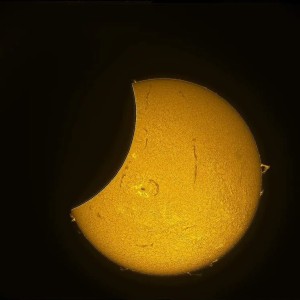FOUND Thanks Brett Looking for Chilean Partner-updated
Please Log In to view the details for this classified ad.
Don't have an Astromart account? Click here to create one
Hi to all,
We are installing a scientific/advanced imaging system in the Atacama desert in Chile. It is due to start up in March 2024. The telescope will be placed at Deep Sky Chile, in a complex from which it is possible to see a number of large professional telescopes such as Vera Rubin.
This is obviously a true dark sky site with Mag 22.1 skies and typical seeing of around 1,0 arcsec. The facility boasts roughly 320 clear nights per year. 2/3 of the available time has already been allocated to a number of Czech universities and the undersigned. At present, therefore, we have 1/3 of the time available for use by third parties.
The system is being finalised at present but it will use an Optec Perseus manifold which will allow the selection of various sets of instruments, four in all. The principle equipment which will be made available will be as follows:
We are looking for a partner who will commit for at least one year. We have yet to determine precise costs but we expect that we will ask around $9000 per annum for a total of 107 nights. This is not a money making venture, we simply want to cover our costs and ammortisation of the equipment.
Please contact me if you are interested. I have a visit report on DSC which I can send to you.
Kind regards.
Roland Casali.
We are installing a scientific/advanced imaging system in the Atacama desert in Chile. It is due to start up in March 2024. The telescope will be placed at Deep Sky Chile, in a complex from which it is possible to see a number of large professional telescopes such as Vera Rubin.
This is obviously a true dark sky site with Mag 22.1 skies and typical seeing of around 1,0 arcsec. The facility boasts roughly 320 clear nights per year. 2/3 of the available time has already been allocated to a number of Czech universities and the undersigned. At present, therefore, we have 1/3 of the time available for use by third parties.
The system is being finalised at present but it will use an Optec Perseus manifold which will allow the selection of various sets of instruments, four in all. The principle equipment which will be made available will be as follows:
- The imaging instrument will be a 50cm (20") RC with mirrors made by Paul Jones of Star Instruments. The primary mirror is in fused quartz while the secondary mirror is in Zerodur. The fully diffraction limited field is about 0,5 deg but it has a usable field out to 0,7 deg. Focal length is 4100mm (f8,2) which translates, in sensor size terms, to respectively about a 32mm diagonal in the first case and a 52mm diagonal in the second case.
- The mount will be a heavy duty 10 Micron GM 4000 HPS II which is fully robotic and has absolute encoders on both axes. Typically, the mount will allow 10 minute unguided exposures. Having said this, a separate guiding system will also be installed. The nominal maximum payload is 150kg but, all up, the optics and cameras will weigh about 85kg. This will leave some room for expansion.
- The cameras will be as follows:
- On the 3" Perseus port will be a Moravian C4-16000 CMOS with 7 position filter wheel and complete set of Sloan filters. This will be the main photometry camera. The C4-16000 camera uses the GSENSE 4040 sensor which has 9 micron pixels and is sized at 37mm square, which is a 52mm diagonal.
- On the first 2" port there will be an Andor Marana 4BV-11 CMOS which is possibly the most sensitive camera commercially available. The camera will have a FLI CL 1-14 filter wheel and will contain a set of Sloan filters, RGB filters and narrowband filters.
- On the second 2" port there will amost certainly be a remotely-operated low/medium resolution spectrograph and the detector will be a QHY600 Pro CMOS using optical fibre feeds (we found this to be more reliable than USB3).
- The third 2" port is currently empty and we are open to suggestion.
- Focusing will be by an Optec focuser placed on the secondary mirror.
- The observatory control and automation system will be Ricerca by Omega Labs. This software allows full equipment automation and will conduct such things as automatic supernova searches, quasi real-time GRB searches, automated plate solves, multi-object imaging and so on. Do have a look at the Omega labs site for further information.
We are looking for a partner who will commit for at least one year. We have yet to determine precise costs but we expect that we will ask around $9000 per annum for a total of 107 nights. This is not a money making venture, we simply want to cover our costs and ammortisation of the equipment.
Please contact me if you are interested. I have a visit report on DSC which I can send to you.
Kind regards.
Roland Casali.
Funding Member
Sponsors
- SellTelescopes.com
- GetLeadsFast, LLC
- astronomy-shoppe
- APM-Telescopes
- RemoteSkies.net
- Matsumoto Company
- Anacortes Telescope
- jp Astrocraft, LLC
- OMI OPTICS USA LLC
- ASTROPHOTOGRAPHY BY MARTIN PUGH
- ADM
- T.E.C
- Denkmeier Optical
- FocusKnobs
- Desert Sky Astro Products
- AstroMart LLC
- Astromart Customer Service
- Rouz Astro
View all sponsors


